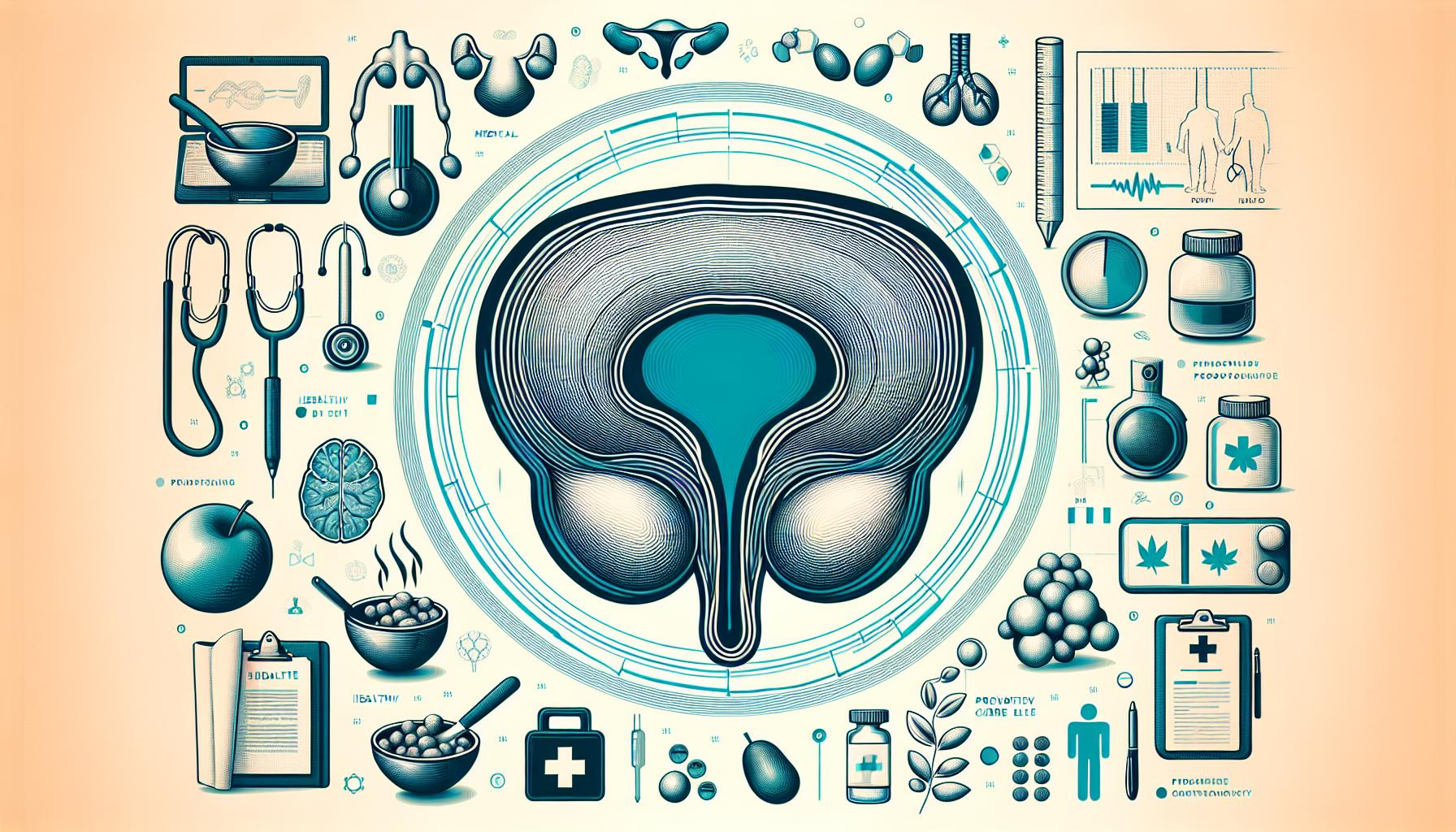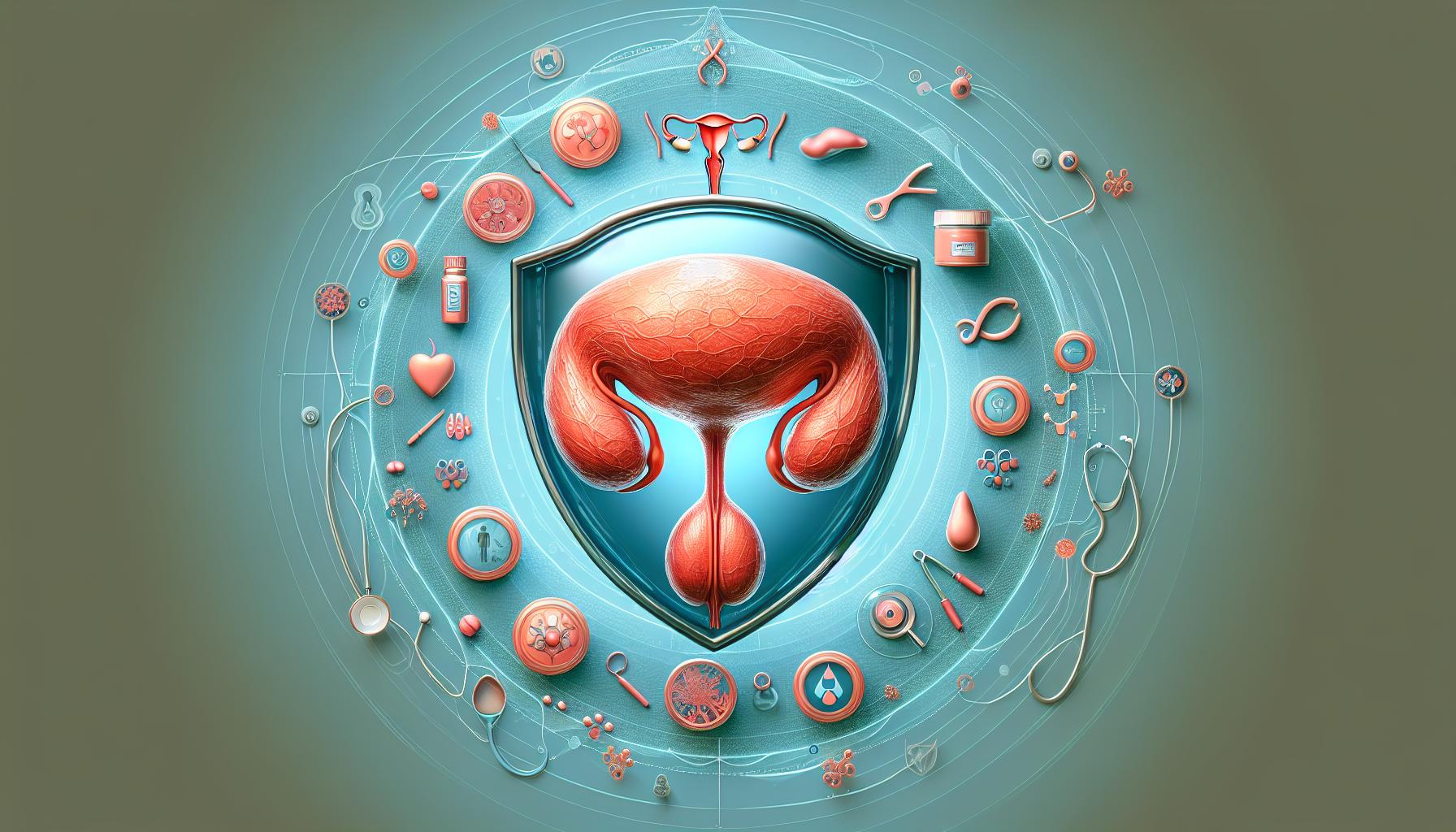
Introduction to Enlarged Prostate
What does an enlarged prostate mean? Simply put, an enlarged prostate, also known as benign prostatic hyperplasia (BPH), happens when the prostate gland grows in size. This common condition tends to affect older men, causing lower urinary tract symptoms. Throughout this article, we’ll sail through the sea of information about the causes, symptoms, and management of enlarged prostate.
Unmasking the Prostate and Its Functions
The prostate, a small gland about the size and shape of a walnut, lies nestled in the male reproductive system. Located just below the bladder, it surrounds the urethra, the tube that carries urine and semen out of the male body. Known for its role in the production of seminal fluid, it’s the prostate’s positioning, closely embracing the urethra, that gives rise to problems when an enlargement occurs.
Understanding An Enlarged Prostate
An enlarged prostate can be likened to a growing tree in a tight space, with its expansion leading to a compression of the urethra. This development can bring about a myriad of urinary symptoms.
Signs of a Growing Problem
The symptoms of an enlarged prostate can range from mild to severe, making every man’s experience different. One might liken it to driving a car with a half-clogged fuel line: the car still runs, but it’s far from optimal performance. Common symptoms include frequent urination, trouble starting and stopping a stream of urine, and difficulty emptying the bladder completely.
Differentiating Enlarged Prostate From Other Conditions
While these symptoms might raise the red flag for BPH, it’s crucial to remember they could also hint at other conditions. These symptoms mimic those of other, sometimes more serious, conditions, making it important to rope in medical help for a definitive diagnosis.
Getting a Grip on the Causes
The causes of BPH still remain widely debated in the medical fraternity. Nevertheless, shifts in hormone levels as a man ages have been noted as a potential push-factor. As a silver sunrise follows a golden sunset, the onset of certain age-related changes is inevitable.
Exploring Treatment Options
Treatment options for an enlarged prostate are as diverse as a field full of wildflowers, ranging from lifestyle modifications and medications to minimally invasive procedures and surgeries. The chosen path often depends on symptom severity, the overall health of the individual, and discussions with the doctor.
Conclusion
An enlarged prostate can present an array of urinary symptoms, potentially marring the quality of life for many men beyond middle age. However, with timely management and treatment, navigating through these challenges becomes less overwhelming, and perhaps even more manageable than you might have initially thought.
Frequently Asked Questions
1. Can an Enlarged Prostate be Reversed?
While you can’t reverse prostate enlargement, treatments can help manage symptoms and improve the quality of life.
2. Does an Enlarged Prostate Affect Sexual Function?
An enlarged prostate can sometimes affect sexual function, but this isn’t always the case. It largely depends on the individual and their overall health.
3. Is an Enlarged Prostate a Sign of Cancer?
Enlarged prostate (BPH) is not prostate cancer, and having BPH doesn’t increase your risk of developing prostate cancer. However, the symptoms can be similar so it’s important to consult with your doctor.
4. What Foods should be Avoided with an Enlarged Prostate?
Certain foods like red meat, dairy, sugar, and caffeine may exacerbate symptoms of an enlarged prostate.
5. What is the Best Treatment for Enlarged Prostate?
There is no one-size-fits-all treatment for enlarged prostate. The best treatment depends on symptom severity, the overall health of the individual, and should be determined with your healthcare provider.


